Forum Discussion
professor95
Jan 30, 2011Explorer
We actually had a decent winter day! The outside temperature got up to 51 degrees F. It felt like we were having a heat wave. :C
I pulled one of the CPE 2000i units out onto the driveway to document some load testing.
The photo below is my resistive load testing rig. The electric heater pulls 1445 watts at 118 volts showing on the Kill-A-Watt meter. The Kill-A Watt is plugged into the parallel outlet and the heater into the Kill-A-Watt. The Kill-A-Watt does not measure the added load from the light bulb string. I previously discovered it had an internal 15 amp fuse, so not wanting to blow it again, I have a loop coming out of the outlet box I can snap an inductive amp meter (amp-clamp) over to measure combined current loads while using the Kill-A-Watt to monitor voltage.
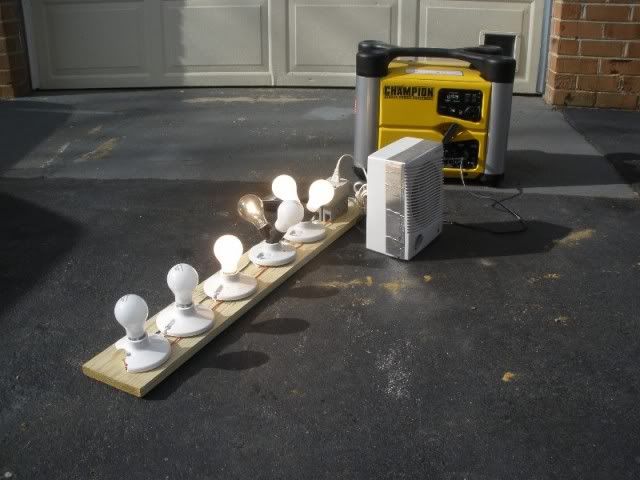
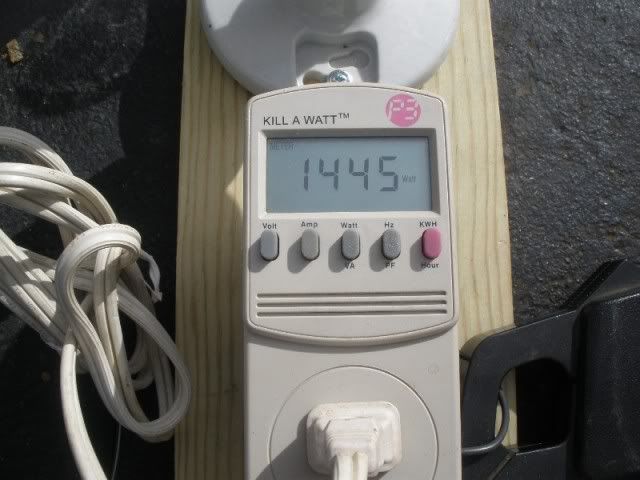
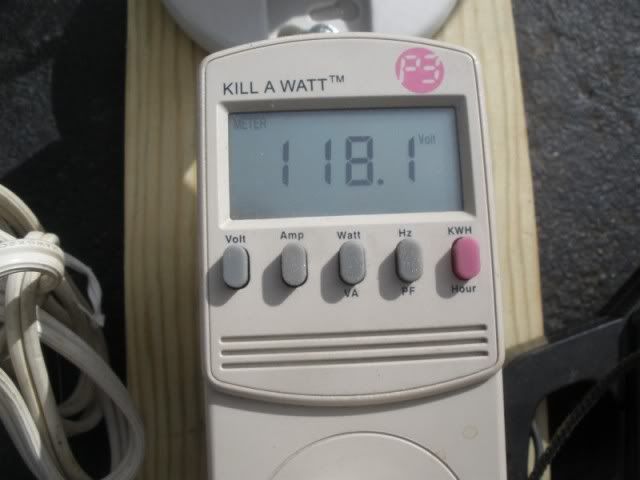
The lamp strip contains seven incandescent light bulbs rated at 100 watts each. Note that the bulb rating, meter rating and perhaps even the circuit breaker on the 2000i do not agree exactly.
The first test was to find out when the load gets high enough to cause the engine to begin to speed up. This occurred with four of the 100 watt bulbs on (no electric heater). Voltage was 121.5 and the Amp-Clamp showed 3 amps (365 watts measured, 400 watts rated).
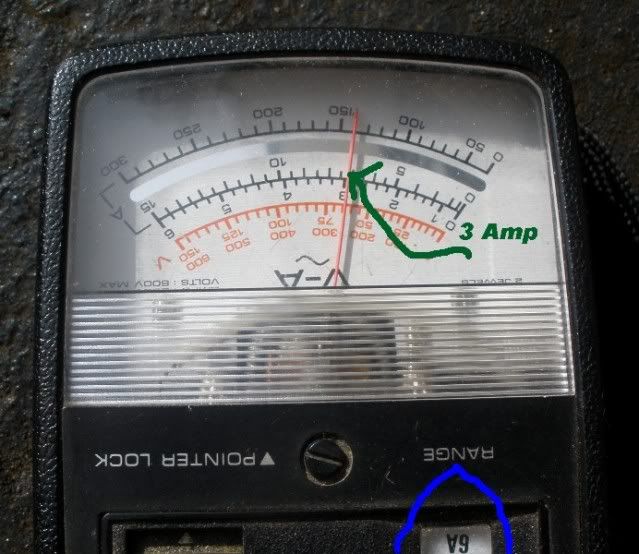
The next test was to turn the electric heater on high without any bulbs added. The Kill-A-Volt showed 1445 watts @ 118 volts. The Amp-Clamp was reading 13 amps (12.45 computed).
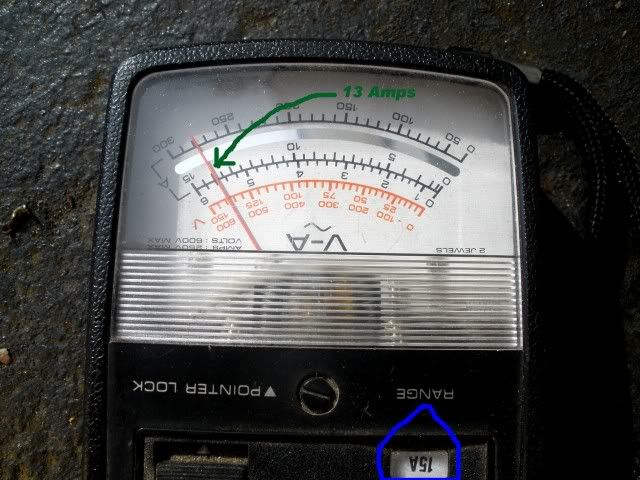
I started adding light bulbs one at a time to the load. With two added 100 watt bulbs (1,640 rated watts) the Amp-Clamp moved to 14 amps (1,652 measured watts). The engine was running flat out, but it was holding the load.
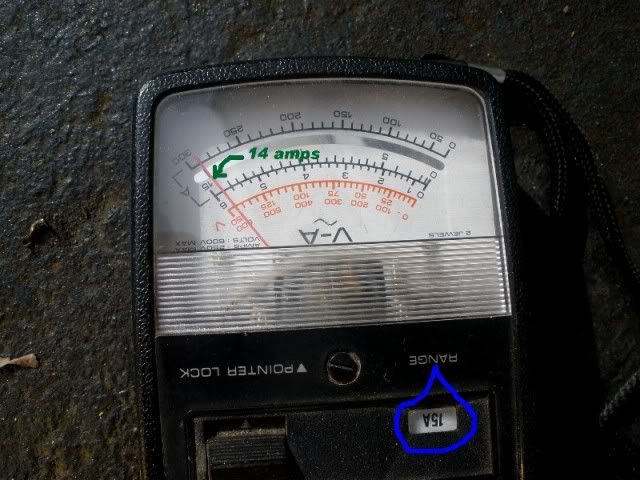
I turned on another 100 watt bulb (three total added) – everything still held, so I added one more for a total of four bulbs. The Amp-Clamp was at full scale (15+ amps) and the computed load was 1,845 watts. I let the 2000i run another 5 minutes to see if it would hold. The little Champ hung in there at 1,800+ watts @ 118 volts.

One more bulb for a total of five 100 watt bulbs plus the electric heater. The load was now 1,945 watts. It only held for about 15 seconds and the 2000i circuit breaker tripped.
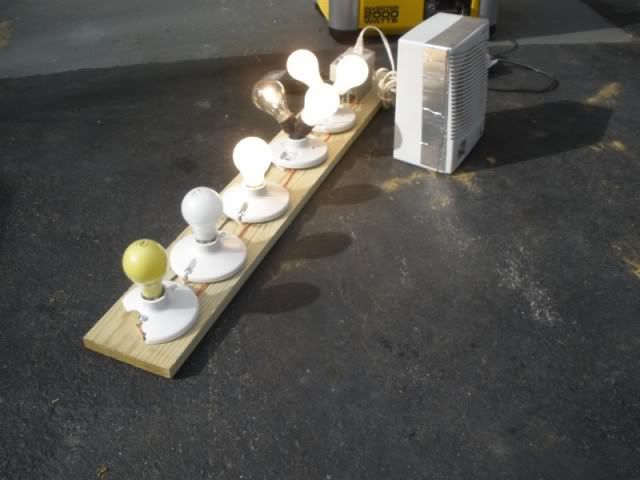
There is one important thing to understand about this test. The load was resistive, not inductive. Additionally, the load was stepped – not applied all at once which would create a higher current surge that would have most likely tripped the inverter module software enabled current overload.
Not bad for a little 80 cc engine. :B
I pulled one of the CPE 2000i units out onto the driveway to document some load testing.
The photo below is my resistive load testing rig. The electric heater pulls 1445 watts at 118 volts showing on the Kill-A-Watt meter. The Kill-A Watt is plugged into the parallel outlet and the heater into the Kill-A-Watt. The Kill-A-Watt does not measure the added load from the light bulb string. I previously discovered it had an internal 15 amp fuse, so not wanting to blow it again, I have a loop coming out of the outlet box I can snap an inductive amp meter (amp-clamp) over to measure combined current loads while using the Kill-A-Watt to monitor voltage.



The lamp strip contains seven incandescent light bulbs rated at 100 watts each. Note that the bulb rating, meter rating and perhaps even the circuit breaker on the 2000i do not agree exactly.
The first test was to find out when the load gets high enough to cause the engine to begin to speed up. This occurred with four of the 100 watt bulbs on (no electric heater). Voltage was 121.5 and the Amp-Clamp showed 3 amps (365 watts measured, 400 watts rated).

The next test was to turn the electric heater on high without any bulbs added. The Kill-A-Volt showed 1445 watts @ 118 volts. The Amp-Clamp was reading 13 amps (12.45 computed).

I started adding light bulbs one at a time to the load. With two added 100 watt bulbs (1,640 rated watts) the Amp-Clamp moved to 14 amps (1,652 measured watts). The engine was running flat out, but it was holding the load.

I turned on another 100 watt bulb (three total added) – everything still held, so I added one more for a total of four bulbs. The Amp-Clamp was at full scale (15+ amps) and the computed load was 1,845 watts. I let the 2000i run another 5 minutes to see if it would hold. The little Champ hung in there at 1,800+ watts @ 118 volts.

One more bulb for a total of five 100 watt bulbs plus the electric heater. The load was now 1,945 watts. It only held for about 15 seconds and the 2000i circuit breaker tripped.

There is one important thing to understand about this test. The load was resistive, not inductive. Additionally, the load was stepped – not applied all at once which would create a higher current surge that would have most likely tripped the inverter module software enabled current overload.
Not bad for a little 80 cc engine. :B
About Technical Issues
Having RV issues? Connect with others who have been in your shoes.24,344 PostsLatest Activity: Dec 24, 2025